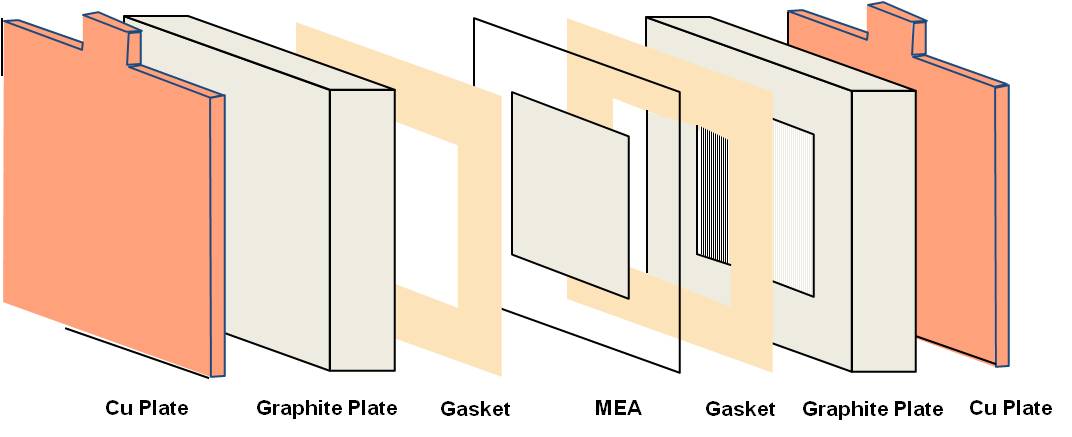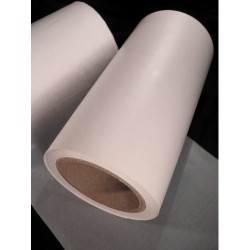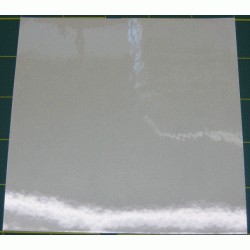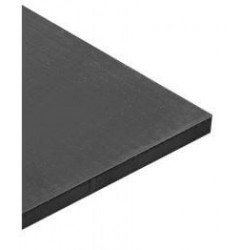No products
Prices are tax excluded
Product successfully added to your shopping cart
There are 0 items in your cart. There is 1 item in your cart.
Catalog
Gasketing
-
PRODUCTS
- WEATHER STATIONS
- WATER QUALITY MONITORING
- TRANSMITTERS AND TRANSDUCERS
- TRAINING & EDUCATION SYSTEMS
- SPECTROMETERS & SPECTRO-RADIOMETERS
- SENSORS & PROBES
- POWER & ENERGY
- MEASUREMENT AND CALIBRATION INSTRUMENTS
- LIGHT & LASER SOURCES
-
LABORATORY, PHARMACY & MEDICINE EQUIPMENT
- Water Quality
- Vet
- VARIOUS
- VACUUM SYSTEMS
- Ultrasonic Baths
- Stirrers
- SPECTRO-PHOTOMETERS
- Showers
- Sensores y Sondas
- Rotary Evaporator
- Refractometers
- Pumps
- PRECISION BALANCES
- Plant Growth Chambers
- PARTICLE ANALYZERS
- OVENS
- ORBITAL SHAKERS
- Mills
- MILK ANALYZERS
- Microtome
- Microscopes
- Microplate Readers
- MEDICAL ANALYZERS
- Laboratory Reactors
- INFLAMMATION ANALYZERS
- INCUBATORS
- HUMAN TEMPERATURE
- Hotplates
- GAS BURNERS
- Gas Analyzers & Detectors
- FAT ANALYZER
- Evaporators
- Distillers
- Dissolved Oxygen
- Density Meters
- Cultivators
- COLORIMETERS/GLOSS METERS
- COLD STORAGE ROOMS
- Chromatograph
- Chillers, Coolers, Refrigerators
- Chemical Analyzers
- CENTRIFUGERS
- CABINETS AND HOODS
- Body Scanners
- BATHS AND CIRCULATORS
- AUTOCLAVES
- ANALYSERS
- Anaerobic Workstations/Chambers
- AIR QUALITY
- Air Purify
- Instruments for Geophysics and Seismology
- INDUSTRY & PROCESS CONTROL
-
HAND/PORTABLE METERS
- WOOD MOISTURE
- Weather Station
- WATER QUALITY
- Water Flow
- VIDEOSCOPE
- VIBRATION ANALYZERS
- Veterinary
- ULTRAVIOLET
- Thickness Measurement
- THERMAL IMAGING
- TEMPERATURE & HUMIDITY
- TEMPERATURE
- TDS
- Spectrum Analyzers
- Spectrocolorimeters
- SPECTRO RADIOMETERS
- SPECTRO PHOTOMETERS
- Sound Meter
- SOUND LEVEL METERS
- SOLAR RADIATION
- Soil Moisture
- SOIL COMPACTATION
- SOIL CALCIMETER
- Salinity
- Relative Humidity
- Refractometers
- RADIATION (Gamma, Beta and X)
- Quantum Light 0-4000 µmol
- PRESSURE & TEMPERATURE
- Pressure
- Power Analyzers
- PHOTOSYNTHETIC LIGHT
- pH
- Particles in Air
- OXIGEN
- ORP
- OIL ANALYZERS
- MULTIFUNCTION
- LUXOMETROS
- Leakage Meters & Detectors
- ION MEASUREMENTS
- INFRARED Temp. RADIOMETER
- Humidity Sawdust/Hay/Pellets
- HUMIDITY OF CONCRETE
- GLOSS
- GAS ANALYZERS
- FORMALDEHYDE
- Food
- Fluorometers
- Distance rangefinder
- DISSOLVED OXYGEN
- Density
- CONDUCTIVITY METERS
- CONDUCTIVITY
- Colorimeters
- CO2 (Carbon Dioxide)
- CO (Monóxido de Carbono)
- CHLOROPHYLL CONCENTRATION
- Cement Moisture
- ANEMOMETER
- AIR QUALITY
- ACCESORIES
- FUEL CELL HARDWARE
- FLOW METERS
- ENVIRONMENTAL PRODUCTS
- Environmental Hygiene
- ELECTROCHEMISTRY, MATERIAL SCIENCE & IMPEDANCE
- ELECTRICITY NETWORK ANALYZERS
- DATA LOGGERS
- CLOROPHYL PHOTOSYNTHESIS
- CATALOGS
-
Browse by Measurement
- Wood Moisture
- Wind Direction
- Water Quality
- Water Level
- WATER FLOW
- VOC
- Viscosity
- Vibration Analyzers
- Vet
- V & mV
- Ultraviolet Light
- Turbidity
- Time
- Thickness
- Temperature
- Telemetry
- TDS
- Strain Gauges
- Stomatal Conduct.
- Sterilization
- States (ON/OFF)
- Spectroradiometry
- Spectrophotometry
- Spectrometry
- Solar Radiation
- Soil Water Potential
- Soil Moisture
- Sodium
- Snow Depth
- Seismology
- Sap/Sap Flow
- Sap Flow
- Salinity/Conductivity
- RELAY OUTPUTS
- Relative Humidity
- Rain Gauge
- Radon
- Radiation
- Quantum Light
- Pulses
- Pressure
- Potassium
- Pipes Inspection
- Photosynthesis
- Pharmacy & Medicine
- pH
- Peristaltic Pumps
- Penetrometers
- Particle Meters
- Particle Counters
- PAR Light
- Ozone (O3)
- Oxígeno Disuelto DO
- ORP - REDOX
- Occupation and Time
- O2 Oxygen
- Noise
- Nitrogen Generators
- Nitrate
- Network Analyzers
- Movement & GPS
- Meteorology
- Load Cells
- Light & Laser Sources
- Level
- Leaf Wetness
- Leaf area index
- LCR
- KW & KW/H
- Ions
- Impedance
- Idc (DC Current)
- Iac (AC Current)
- Haze/Fog
- GEOTECHNICS
- Geiger counters
- GAS (ANALYZERS)
- Fuel Cells
- Fluorescence
- Flavor/Taste/Acidity
- Exterior humidity
- Events
- Evapotranspiration
- Energy and Power
- Electrochemistry
- Distance
- Differential Pressure
- Diesel Level
- Dew Point
- Destiladores
- Density
- Dendrometers
- Cryoscopes
- Cracks in Buildings
- Conductivity in Water
- Conductivity in Soil
- COMPRESSED AIR
- Color / Colorimeter
- CO2 Carbon Dioxide
- CO Carbon Monoxide
- Chlorophyll
- Calibrators
- Calcium
- Autoclaves
- Atmospheric Pressure
- Ammonia
- Airflow
- Air Speed
- Air quality
- 4-20mA
- Highlighted
-
Brands
- WonATech
- Walz
- Veris Industries
- Vegetronix
- UPWARD INNOVATIONS
- Tempmate
- Tanel
- TandD
- StellarNet .Inc
- Spectrum Technologie
- SolGeo
- SCRIBNER ASSOCIATES
- Scientech Tech.
- RST Instruments
- RIKA SENSORS
- RADONOVA
- Quarta-Rad
- PSI (Photon Systems)
- Pronamic
- Particles Plus
- Onset
- Nvis Technologies
- NorECs
- NexCeris - NextCell
- Nesa
- MRC Lab. Equipment
- Meter Environment
- MEATROL
- Magnelab
- MAE srl
- Konted
- KandH
- Judd Communications
- IMKO
- iButton
- Hubei Fangyuan
- HORIBA/Laqua
- HONGYUV
- Grant Instruments
- Gentos
- Fuehler Systeme
- FRIGGA
- EMS Brno
- EME Systems
- ELECTROCHEM INC.
- Eko Instruments
- Ecomatik
- Delta-T
- Delta Ohm (Senseca)
- Decagon
- Davis
- Comet System
- Chao Sensor
- Capetti Elettronica
- Bosean
- Blue Maestro
- Autoedu
- Atago
- Aquas Inc.
- Aquaread
- Apogee Instruments
- AO-Electronics
- Algodue
- AIRY TECHNOLOGY
- Acksen
- 3nh
- Spectral Evolution
-
Applications
- Water
- Veterinary
- TRAINING / EDUCATIONAL
- SPECTROSCOPY & SPECTROPHOTOMETRY
- SCIENCE AND RESEARCH
- MEASUREMENT AND CALIBRATION INSTRUMENTS
- LABORATORY, PHARMACY, MEDICINE AND HEALTH
- INDUSTRY
- Geotechnics /Seismology
- ENVIRONMENTAL SCIENCES
- ENVIRONMENTAL HYGIENE
- Cold Chain - Transport
- Building Monitoring
- AUTOMOTIVE
- AUTOCLAVES
fuentes RSS
No RSS feed added

Gasketing
Gaskets in a Fuel Cell provide the correct compression and act as a ‘barrier’ for potential fuel leaks; maximizing the highest possible efficiency.
One of the most important parameters in a fuel cell cosntruction is the thickness of the gaskets. This determines how much the flow fields are allowed to pinch into the electrode. For a go...
Gasketing
Gaskets in a Fuel Cell provide the correct compression and act as a ‘barrier’ for potential fuel leaks; maximizing the highest possible efficiency.
One of the most important parameters in a fuel cell cosntruction is the thickness of the gaskets. This determines how much the flow fields are allowed to pinch into the electrode. For a good contact (i.e. low contact resistance), it is essential that the values are 0.002” to 0.003” for a carbon paper backing and 0.010” to 0.015” for a carbon cloth backing*.
Since electrode thickness for anode and cathode may vary, gasket thickness for each side is determined separately using the formula: Gasket thickness = (individual electrode thickness) – (desired pinch)
Note: These numbers are provided for a guidance only. It is better to determine the pinch for individual situations with correct consideration for the type of backing used and the nature of the gasket material (elastomeric materials, e.g. EPDM, tend to compress more than non-elastomeric films, e.g., PTFE)

-
Ref.: 592863 Teflon gasket - 30 x 30 cm (SKU 99030007)
This 592863 PTFE (PolyTetraFluoroEthylene) film made with Teflon® fluoropolymer will not compress under pressure, is durable and easy to remove.
-
Mylar Laminate (Self-Adhesive) Gasket - 9" x 10" - Ref.: AO-590143
The AO-590143 Mylar® Gasket is a DuPont® developed and manufactured oriented, multi-use, versatile polyester (PET) film.
-
Viton Fluoroelastomer Rubber Sheet Gasket - 12" x 12" - Ref.: AO-690200
The AO-690200 is a thin gauge (from 0.015” to 0.25” thick) 12” by 12” chemical- resistant Viton rubber with 75A durometer for use in fuel cell test fixtures, particularly for H2/O2 (pressurized or unpressurized), H2/Air (pressurized or unpressurized), and fuel cells that are utilizing liquid electrolytes (such as sulfuric acid or potassium hydroxide,...
-
Ref.: 590763 EPDM Rubber Sheet - 12" x 12" (SKU 99030013)
Cut your own gaskets out of this 12 inch x 12 inch sheet of high-performance EPDM (Ethylene Propylene Diene Monomer) Rubber.





